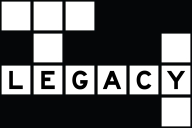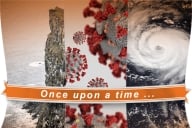You have /5 articles left.
Sign up for a free account or log in.
When we entered college around 1980, no area on campus was more energetic and cool than the humanities. Back then, prestige was high -- people wanted to know what those deconstructionists were up to. The share of bachelor’s degrees in the humanities had dropped in the ’70s, but enrollments were still strong.
At the University of California, Los Angeles, which one of us attended, a course on Italian film (de Sica, Rossellini, Visconti, Fellini, Antonioni) drew 400 students every semester. In the preceding decade, cutting-edge journals had been founded -- New Literary History, Critical Inquiry, diacritics and boundary 2 -- while the School of Criticism and Theory at the University of California, Irvine, had become one of the hottest annual academic gatherings.
In a few years, The New York Times Magazine would profile literary theorists at Yale University, “unquestionably brilliant” and dashingly roguish, with glossy photos attached (“The Tyranny of the Yale Critics”). William Bennett, Allan Bloom, The New Criterion et al. would declare the humanities elite a leading threat to traditional education -- which only flattered the targets. It was easy to believe that what happened in humanities classrooms was momentous and adventuresome.
That’s how it seemed to us. To younger humanities teachers and students in 2019, that attitude is now inconceivable -- rendered impossible by an altered reality. Today, as has been amply reported on this site, English, history, foreign languages and philosophy combined make up barely 5 percent of all four-year bachelor's degrees. In recent years, the decline has become precipitous. The American Historical Association reports that between 2011 and 2017, the number of history degrees awarded dropped more than 30 percent, and philosophy, English and foreign languages more than 20 percent.
We cannot expect a turnaround, either. According to the 2016 American Freshman Survey, which polls first-year students soon after they matriculate, a meager 1.3 percent of respondents aim to major in English, 0.9 percent in history and 0.3 percent in any of the languages.
The causes for this decline are many and include shifts in employment patterns and the far more substantial funds supporting scientific research that, in turn prompt colleges and universities to pour money into those fields. Trying to reverse the decline in student interest, humanities professors are urged to make their syllabi more relevant and topical, while requirements for the major and the doctorate have been lightened. Innovative formations such as digital humanities have come along, and social issues, too, such as LGBT rights, have energized many teachers.
But these innovations won’t rebuild undergraduate enrollments unless they do something else as well. They must impress 19-year-olds as we were impressed 40 years ago, convincing them that here, in the humanities, they will encounter works that touch them deeply, challenge them fundamentally and change their lives. They may not secure you a high-paying job right after graduation, but they may give you a lifetime of company with inexhaustibly fine human creations, and that’s a priceless acquisition.
We know that this demand will appear anachronistic, even willfully so, but there is persuasive empirical evidence that it can succeed and even flourish in the midst of our technocratic age.
The Lyceum Program at Clemson University -- home to arguably the best college football team in America -- is a minor in political science. It assigns classics of political theory (Aristotle, Hobbes, Marx and the like) in an eight-course sequence. The courses are tough, the pedagogy intense. Those students awarded a scholarship of $2,500 per year must meet weekly with faculty advisers for an hour of focused discussion. Class presentations concentrate intensely on the texts, most of which are more than 100 years old.
The program runs squarely against the trend toward contemporary materials, but since the program started, applications for the scholarship program have leaped from 192 to more than 650 in just five years. The demand has been so high that the leadership opened the program two years ago to nonscholarship students. Those enrollments have quickly risen from zero to 102.
Similar bottom-up demand may be found at the University of Texas at Austin’s Jefferson Center for the Study of Core Texts & Ideas, which immerses students in “the study of the great books.” The program began only a few years ago, in 2014. Last year, it received 500 applications for 130 slots in its Scholars Program.
At the high school level, too, students are choosing institutions with an emphasis on the classics. Great Hearts Academies started 15 years ago with one middle school enrolling 120 students. The curriculum follows E. D. Hirsch’s Core Knowledge program in the early grades; it focuses on Western civilization and Latin (or Greek or a modern language) in later grades. Consider these numbers: the network now has 28 schools enrolling 17,000 students, with a huge waiting list.
The trend, we add, isn’t just about the traditional great books courses. A recently created major in the medical humanities at Johns Hopkins is the fastest growing in the school of arts and sciences. Its readings include Homer, biblical texts, Dante, Kierkegaard, Thomas Mann and contemporary film.
The power and popularity of classical liberal arts has altered the college testing world, too. If students wish for an alternative to the SAT and ACT, they can now take an exam aptly named the Classic Learning Test. Its reading portion skips those tepid passages found on many standardized tests and instead has students respond to writings by Aristotle, St. Augustine, Jane Austen and Ben Franklin. Only three years old, the CLT is accepted by 150 colleges and expects 25,000 to 40,000 high schoolers to sit for it this year.
In short, empirical evidence shows that the profound and the sublime that has long been the siren call of the humanities remains as compelling today as it has been for 24 centuries.
What attracts students to these works, and the teachers who render them present? The answer may be simpler and more profound than the professoriate will acknowledge: human experiences matter more than objects, and encounters with the most searing elements of our humanity are the most fundamental experiences of all.
Our house stood within a few rods of the Chesapeake Bay, whose broad bosom was ever white with sails from every quarter of the habitable globe. Those beautiful vessels, robed in purest white, so delightful to the eye of freemen, were to me so many shrouded ghosts, to terrify and torment me with thoughts of my wretched condition. I have often, in the deep stillness of a summer's Sabbath, stood all alone upon the lofty banks of that noble bay, and traced, with saddened heart and tearful eye, the countless number of sails moving off to the mighty ocean.
We are powerfully affected by such lines from Frederick Douglass’s great Narrative, though we’ve experienced nothing like the horrors of American slavery. It is these elements that the best books, music, art and history -- of every period and across cultures -- address: the fact of our mortality; the capacity to love and fear; the ubiquity of pain, joy, ambition, sorrow and hope.
In the misguided quest for relevancy and novelty, we forget that “education” means to draw out. That is, to show students new worlds, confront them with the sublime and the strange, sharpen their taste for beauty, refine their moral compass and deepen their judgment -- in short, to invite them into an examined life.
Too much of contemporary teaching aims at the reverse: flattering the self (instead of coaxing them out of their adolescent selves), foregrounding topical issues without probing them deeply and focusing on skills rather than knowledge. The result: institutions across the United States that press critical thinking as an educational goal in itself -- critical thinking about nothing in particular.
We urge colleges and universities to risk a dramatic reversal: instead of pursuing fashion, let humanities professors work to create deeply demanding courses that confront students with searing, elemental, beautiful and soul-searching materials. Let the requirements be serious -- matching those of the sciences for the expected time commitments. Let students hear a poem read in the original language and then study the challenges of translation; invite them to wrestle with the abstract language of modernism or explore the metaphysical maze of a Donne sonnet. Teach them to absorb the music of Beethoven and the Modern Jazz Quartet with acute ears. Above all, don’t apologize for difficulty, but ensure that professors who offer such courses teach what they love and know deeply, and hold as precious jewels.
We knew the difference when we were undergraduates, and students still know the difference. Our hunger 40 years ago for genius and insight and historic events and personages isn’t absent from the hearts of the Class of 2022. They have it just as much as we did. Science stretches the boundaries of the physical world and promises genuinely new knowledge. The humanities press otherwise: to the human condition we all share. This inward geography is timeless, born anew in each of us. Allowed to explore that world in the company of those who have evoked it most powerfully, students respond enthusiastically. That’s why adults remember so well their own encounter with profound works, and why their children are waiting for their chance.








